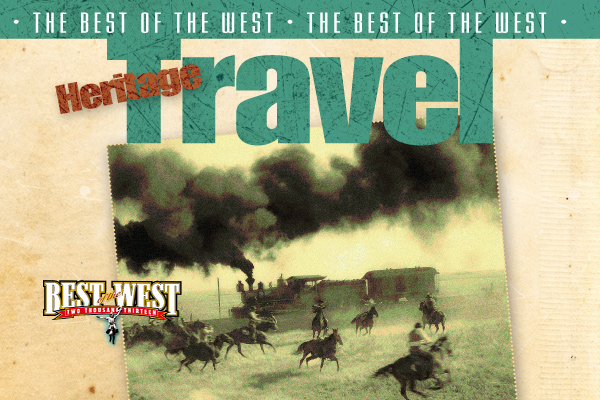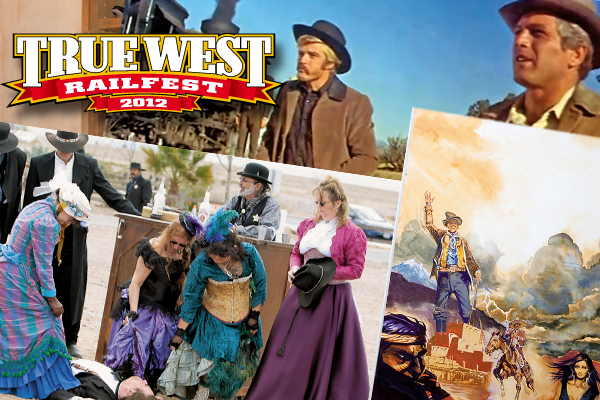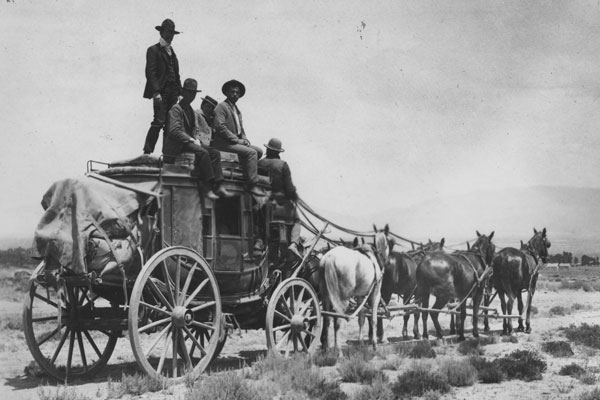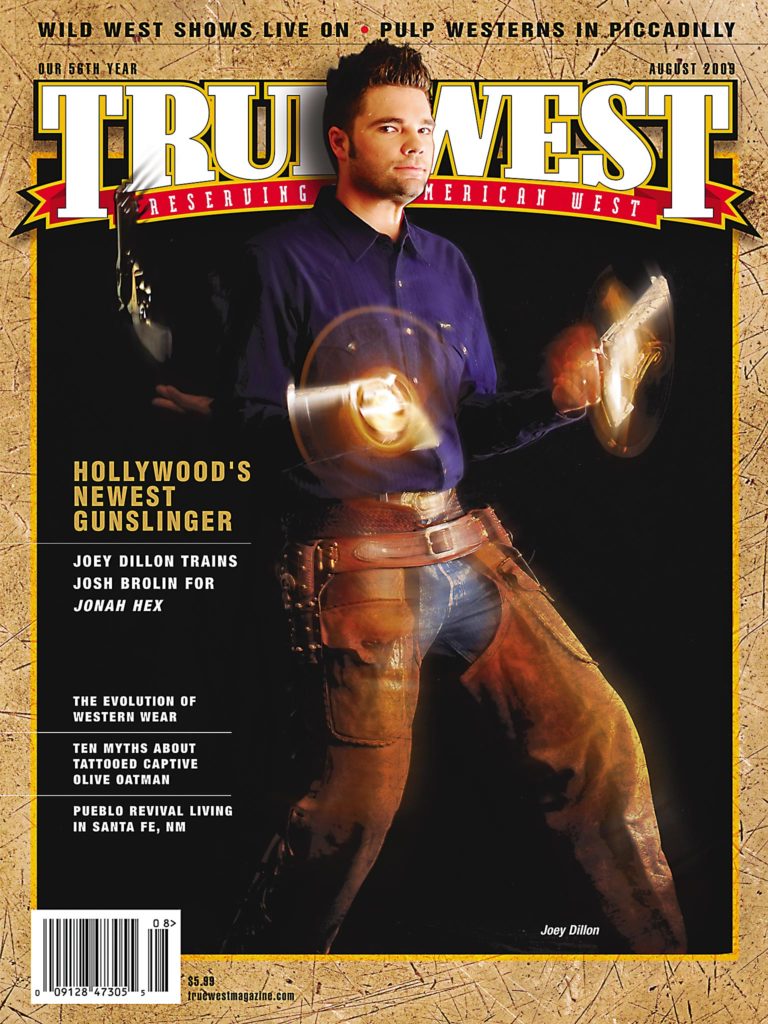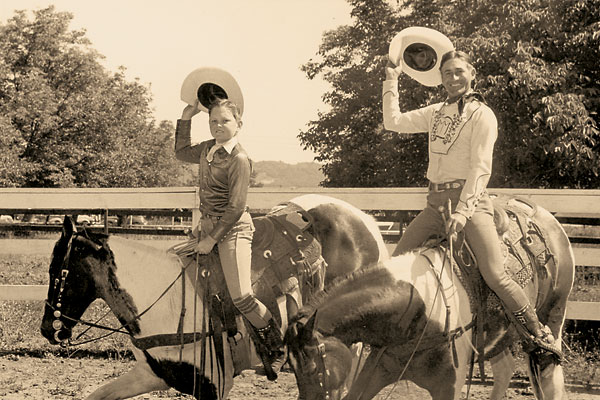
“He just won’t let the dream die. All of us are just so devoted to this man and his dream. It’s a dying art. We come from everywhere just to be in his shows. I hope he can carry it on for another 10 years.”
World record holder, big loop rope spinner Cheryl Bacon, who has been with “Buffalo Bill’s Wild West” for 34 years, beamed as she said these words. She is not alone in her sentiment. The other cast members of the show share her intense sense of loyalty and affection to their leader, producer Montie Montana Jr. They all feel they are part of a grand tradition worth preserving.
For more than three decades, Montie Montana Jr. has produced the show, taking it around the world to 26 countries. He is the son of the world-famous Montie Montana, a trick roper and rider, stuntman and actor. Montie Sr. is probably best remembered for roping President Dwight D. Eisenhower during his inaugural parade.
Montie Jr. comes by his show-business instincts naturally. Since his birth on December 28, 1934, he traveled with his father and mother, as they worked their way through rodeo circuits during the 1930s-1940s. By the age of three he was a member of the troupe, and he was a bona fide trick rider by age 11. The family lived out of their horse trailer. Montie Jr. did not live in a real house until he was 10 years old, when his sister Linda was born.
So it was no surprise that Montie Jr., who turns 75 this year, kept his cool demeanor when a show in May 2009, in Prairie City, Oregon, did not come off as one of his smoothest performances.
Behind the Curtain
“The show must go on!” is the rallying cry of every singer, dancer and two-bit thespian who has ever graced a stage. Seasoned performers disguise potential show calamities through quick thinking, honed by years of disaster recovery. It is only when you get to peek behind the curtains that the illusion is revealed.
In Prairie City, the local organizers had set up an “arena” of livestock panels on a beautiful, but slick, grassy meadow that scared the bejezus out of the trick riders. The damp grass was not good for big loop rope tricks either. The place was also devoid of electricity and water, and the “sound system” that needed to reach out to an estimated 500 spectators per show was a puny, battery-operated speaker box.
On top of that were the usual setbacks at any performance involving livestock and horses. Three steers escaped 15 minutes before the show and had to be rounded up. (Between shows the whole bunch was let loose into an unfenced pasture and ended up in downtown Prairie City!) Then an expected wrangler never showed up with his string of horses, forcing the rescue of the settlers in the finale to be performed by the infantry instead of the cavalry.
The topper for the day though, and the true measure of all of the performers’ ability to carry on in the face of adversity, was when longtime collaborator Larry Daylight suffered a heart attack at the arena.
He had been struggling earlier to erect a teepee using local lodgepole logs that were too heavy for the job. This left his two sons, Larry Jr. and Clayton, without a drummer and singer for their Indian act.
True to form, Montie grabbed the drum and filled in for the boys’ ailing father, all the while worried sick about his dear, old friend. Clayton and Larry Jr. fulfilled their obligations to the show like pros, not knowing the fate of their father who was being rushed off in an ambulance as they danced. (Larry Daylight thankfully survived and drove home to Oklahoma with his boys.)
If the audience recognized any of these difficulties, they didn’t show it. They cheered both performances of trick riding, fancy roping, whip cracking, galloping stagecoach chases, cart races and all the other specialty acts.
Cast Call for Catastrophe
Taking a show like this on the road for almost 40 years has resulted in numerous disasters, mishaps and bungles.
In 1976, in Malaysia, bad weather held the troupe hostage, with only seven making it to the sold-out auditorium. They showed up with minimal gear and no animals, plus they were an hour late. More than 10,000 angry spectators were stomping their feet, demanding the show begin immediately. The crew gave the best performance it could, singing cowboy songs, performing rope tricks and Indian dances, and vaulting off the back of an old nag found in the neighborhood. The crowd was placated; the next night 12,000 more showed up for the show.
In 1985, upon the troupe’s arrival in Kuwait, the local police confiscated all of the performers’ six-shooters and blank ammunition, promising to bring them back in time for the first show. But the police did not show up that evening, and the attack on the Deadwood stage had to be acted out by the crew using their fingers, while they shouted “Bang! Bang!” The fiasco made news on major American networks.
Also while in Kuwait, one of the mares died in the arena during a performance and had to be dragged off, much to the shock of the audience. A short while later a rider rode a similar horse into the arena, so it could pose as the stricken mare; the crowd was put at ease by the ruse.
As challenging as Montie Jr.’s difficulties have been at times, all of these events pale compared to one catastrophe that befell the original “Buffalo Bill’s Wild West” and nearly brought that show to its knees.
On October 29, 1901, the second of two trains carrying the horses, saddles, gear and some roustabouts for Col. William F. Cody’s original troupe collided with a south-bound fast freight train near Lexington, North Carolina.
The wreck was horrific. Cody’s favorite saddle horse, “Old Pap,” and the equine star of the show, “Old Eagle,” were both killed, along with 108 more horses and a number of mules, cattle and buffalo.
Just as unfortunate, shooting sensation Annie Oakley (born August 13, 1860) was also on board and suffered extensive injuries requiring many months of convalescence before she was able to resume her career in show business. Just like Montie’s crew today, her sense of loyalty also ran deep for her boss, but she never did return to Buffalo Bill’s Wild West.
The accident set Cody so far back financially that many believe it was the beginning of the end for the showman and his famous spectacle of cowboys, Indians, horses, holdups and gallantry that made up his romanticized version of the West. Perpetually strapped for cash, he was forced to keep performing for another 15 years, nearly until his death in 1917. But until his final days he remained the ultimate professional.
Montie Jr. sums up the namesake of his Wild West show simply: “Buffalo Bill Cody … was one hell of a guy. [He] has done more to establish the image of the Old West throughout the world than any other person in history. Amen!”
Despite our shortened attention spans, fondness for air-conditioned comfort and obsession with technology, as long as there are horses and performers, there will be Wild West acts and near disasters—and someone saying, “The show must go on!”
Charley Engel held Montie Montana Jr.’s horses and stagecoach for ransom overnight until he wheedled his way into Buffalo Bill’s Wild West. He played the part of a wooden Indian.


